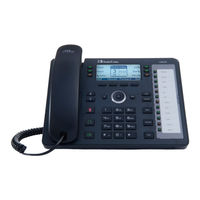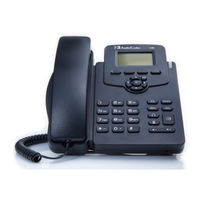User Manuals: AudioCodes 405 IP Phone
Manuals and User Guides for AudioCodes 405 IP Phone. We have 3 AudioCodes 405 IP Phone manuals available for free PDF download: Administrator's Manual, User Manual, Quick Manual
AudioCodes 405 Administrator's Manual (336 pages)
Series of High Definition IP Phones, HD VoIP
Brand: AudioCodes
|
Category: IP Phone
|
Size: 3 MB
Table of Contents
-
-
-
Introduction29
-
File Syntax29
-
-
-
Quick Setup
61 -
Networking
65 -
-
-
-
-
Configuring DTMF114
-
-
-
-
-
-
-
Security
199 -
-
-
Maintenance
227 -
-
-
Appendices
271 -
-
-
Configuring BLF274
-
Configuring Dnd277
-
Configuring FKS278
-
-
-
Configuring BLF285
-
-
-
-
-
-
-
-
SIP Methods321
-
SIP Headers322
-
-
-
G Specifications
327
Advertisement
AudioCodes 405 User Manual (74 pages)
VoIP, 400 IP Phone Series
Brand: AudioCodes
|
Category: IP Phone
|
Size: 1 MB
Table of Contents
-
-
-
Softkeys18
-
-
-
Muting Calls54
-
-
Logging out64
-
-
Logging in70
-
Logging out71
AudioCodes 405 Quick Manual (4 pages)
IP Phone for Microsoft Skype for Business
Brand: AudioCodes
|
Category: IP Phone
|
Size: 0 MB
Advertisement


